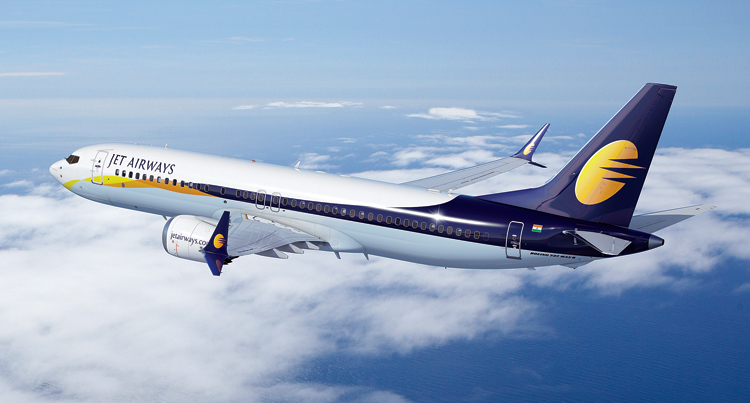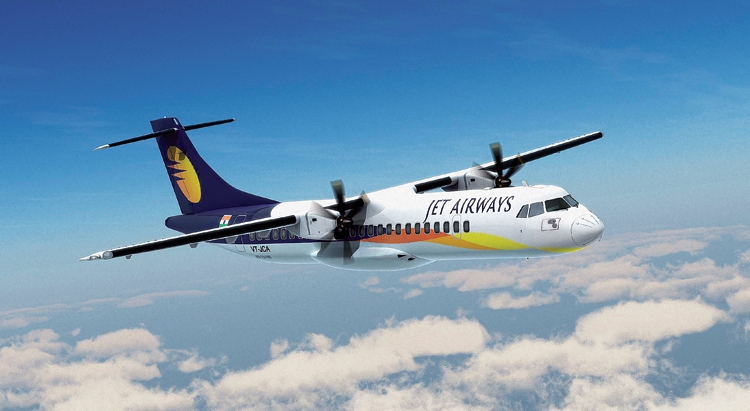An Ominous Shadow on the Indian Airline Industry
Failure of the ongoing efforts to rescue Jet Airways from financial collapse will not only be a disaster for the thousands of employees on the rolls of the airline, it will also cast an ominous shadow on the Indian airline industry itself
 | By B.K. Pandey Editor, SP’s AirBuz |

With the dawn of Wednesday April 17 this year, Jet Airways announced the shutting down of its operations on account of total bankruptcy. If the multi-faceted effort by the financial institutions and the Government of India to save the airline from doom does not succeed, there is a strong possibility that Jet Airways will join the long list of 31 Indian carriers that have been declared as defunct over the years since the arrival of private carriers on the scene post liberalisation of the Indian airline industry in the early 1990s.
BRIEF HISTORY
One of the earliest carriers in the private sector of the Indian airline industry, Jet Airways was established on April 1, 1992 and commenced functioning as an Air Taxi Operator on May 05 the following year with a fleet of four leased Boeing 737 aircraft. The airline was granted ‘scheduled airline status’ on January 14, 1995 and was the first one in the Indian airline industry to commence operations in April 1994 with Boeing 737-400 aircraft. In its 27 years of existence, the airline has won several prestigious international awards. As of now, it has one of the youngest aircraft fleets in the world today and at one point in time, Jet Airways even commanded the highest market share, a status that is now enjoyed by IndiGo Airlines that emerged on the scene 14 years after the birth of Jet Airways. In April 2013, Jet Airways, by then India’s fullservice premium international carrier, became a strategic partner of Etihad Airways, the national airline of the United Arab Emirates when the latter acquired 24 per cent stake. The flag of Jet Airways which, as one of the three full service carriers in the country operating around 4000 flights every month, then appeared to be flying high! All said and done, Jet Airways with a fairly good international network and codeshare agreements with other airlines, was regarded as an icon of the Indian airline industry.
THE OPERATING ENVIRONMENT IN INDIA IS CHARACTERISED BY CUTTHROAT COMPETITION IN WHICH THE AIRLINES ARE COMPELLED TO OPERATE WITH RAZOR THIN MARGINS OFTEN MAKING SUSTAINABILITY AN ISSUE
THE INDIAN AIRLINE INDUSTRY
Today, India has the fastest growing civil aviation market in the world and is expected to reach the third slot by 2025 if not by 2020 as predicted by KPMG and the largest by 2030. Passenger traffic has increased from 51 million in 2010 to 138 million last year. There has been significant growth in international traffic as well. Currently, more than 600 airliners are flying with Indian carriers and another around 900 are on order. With all this, the future appears very bright for the Indian airline industry and consequently for the Indian carriers as well. It is in this context that the collapse of Jet Airways, once upon a time one of the most prosperous airlines, appears not only strange by somewhat jarring as well.

Despite the rosy picture painted above, airlines in India operate under extremely challenging conditions. The operating environment in India is characterised by cut-throat competition in which the airlines are compelled to operate with razor thin margins often making sustainability an issue. It is for this reason that several airlines in the private sector have had to close down. Among all the stakeholders in the Indian airline industry, it is the airline that generally remain at the receiving end.
THE PLIGHT OF JET AIRWAYS
In the case of Jet Airways, the problem of finances has been compounded over the years by flawed management and a series of their decisions that can be questioned. Firstly, management of Jet Airways which ought to have been the responsibility of a Board of Managers, had become virtually a “one man show” with the Chairman at the helm. Over the last ten years, several senior executives did join the airline; but were compelled to resign in the wake of conflict with the Chairman over one issue or another. All decisions were taken by the Chairman himself and some of these do reflect not only a lack of focus; but in fact, a degree of confusion on the aims and objectives of the airline. In 2007, the Chairman acquired Air Sahara, a failed airline, at unreasonably high price of 1,459 crore to compete with the first low cost carrier Air Deccan as well as with the newly launched IndiGo Airlines. To further complicate the problems, the management decided to enter the low-cost segment and set up Jet Lite and Jet Konnect. As for different types of aircraft, the Chairman purchased ten Airbus A330 and ten Boeing 777 airliners. All these decisions created new problems by way of management of not only different types of aircraft with associated manpower, logistic and maintenance issues, but of the management of different business models as well.
JET AIRWAYS WITH A FAIRLY GOOD INTERNATIONAL NETWORK AND CODESHARE AGREEMENTS WITH OTHER AIRLINES, WAS REGARDED AS AN ICON OF THE INDIAN AIRLINE INDUSTRY
The economic slowdown of 2008 and the spike in the price of crude oil created serious problems for the airline industry globally. Even after this painful phase was over, while airlines such as IndiGo made a recovery and began making profits, Jet Airways continued to incur losses. Also, in an effort to compete with the growing tribe of low-cost carriers, Jet Airways had to offer heavy discounts to remain competitive. This finally proved to be the nemesis for the airline as by mid 2018, the company was in serious financial problem with no funds in reserve and huge debts to repay. Also, becoming a strategic partner of Etihad proved to be somewhat counterproductive as the airline lost focus on its network in India and in effect became a feeder airline for Abu Dhabi. Besides, with the entry of Etihad, control of the Chairman over the airline was degraded to some extent.
Failure of the ongoing efforts to rescue Jet Airways from financial collapse will not only be a disaster for the thousands of employees on the rolls of the airline, it will also cast an ominous shadow on the Indian airline industry itself, especially the airlines in the private sector.





